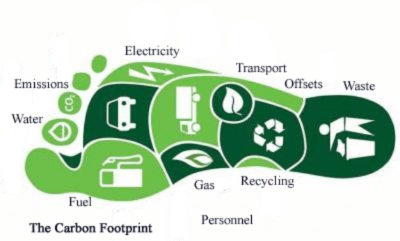Global warming is one of the most pressing challenges of the 21st century, demanding urgent action across various sectors. As temperatures rise and climate patterns shift, the need for innovative solutions has never been more pronounced. Chemistry, as a fundamental science, plays a crucial role in understanding and addressing the multifaceted aspects of global warming. Through the study of chemical reactions and processes, scientists are uncovering pathways to mitigate climate change, enhance sustainability, and develop new technologies. This discourse examines how chemistry can contribute to alleviating global warming, highlighting significant scientific breakthroughs to be attentive to.
The phenomenon of global warming is intricately tied to the structure and dynamics of greenhouse gases (GHGs) in the atmosphere. Carbon dioxide (CO₂), methane (CH₄), and nitrous oxide (N₂O) are pivotal contributors to the greenhouse effect, trapping heat and raising global temperatures. The analytical prowess of chemistry allows researchers to meticulously dissect these gases’ sources, behaviors, and interactions within the Earth’s ecosystems. By employing chemical principles, strategies for reducing emissions can be formulated, such as carbon capture and storage (CCS) technologies, which aim to prevent CO₂ released from fossil fuel combustion from entering the atmosphere.
The development of CCS technology has gained momentum in recent years. At its core, CCS involves capturing carbon dioxide emissions at their source—such as power plants—and transporting it to appropriate storage sites. Through chemical processes, CO₂ is either sequestered underground in geological formations or utilized in various industrial applications. The calcareous process, which involves the mineralization of CO₂, demonstrates how basic chemistry can offer a tangible solution to the problem. By understanding the reaction pathways that convert CO₂ into stable carbonates, we can facilitate the safe and permanent storage of this greenhouse gas. Increased investment and advancements in materials used for capturing carbon, such as zeolites and metal-organic frameworks (MOFs), represent a critical frontier in chemical intervention against global warming.
Another significant avenue where chemistry plays a vital role is in the development of alternative energy solutions. The quest for renewable energy sources has resulted in the need for efficient energy conversion systems. Photovoltaic cells, which convert sunlight into electricity, are one such innovation propelled by polymer chemistry and materials science. Advances in organic solar cells have made solar power more accessible, cheaper, and, importantly, environmentally friendly. Chemists are continually working to enhance the efficiency of these cells by manipulating both organic compounds and their processing techniques, which will lead to higher energy outputs and reduced costs.
In addition, the production of biofuels is another noteworthy area where chemistry meets energy. Biofuels derived from biomass offer a renewable alternative to fossil fuels, and the processes to convert organic matter into fuels like ethanol and biodiesel are deeply grounded in chemical reactions. The fermentation of sugars to produce ethanol showcases the intersection of biochemistry and energy solution. Recent breakthroughs that introduce enzymes capable of converting lignocellulosic biomass into profitable biofuels highlight a progressive shift towards more sustainable energy. As chemical research continues in optimizing these processes, we can expect to see a marked reduction in reliance on fossil fuels.
Furthermore, the refinement of energy storage technologies, particularly batteries, has emerged as a vital focal point in combating global warming. The progression from traditional lead-acid batteries to advanced lithium-ion systems illustrates the significant role of chemistry in enhancing energy efficiency. Not only do modern batteries need to store energy effectively, but they also require materials that are sustainable and non-toxic. The development of new materials, such as sodium-ion batteries, is promising for future energy storage solutions, as they utilize abundant resources, minimizing ecological impact while maximizing practical application.
To combat global warming effectively, the chemistry of our materials also needs rethinking. The traditional manufacturing processes often entail significant energy consumption and emissions. The exploration of green chemistry principles—designing chemical processes that reduce waste, energy usage, and toxicity—can lead to a paradigm shift in industrial practices. By employing renewable feedstocks and minimizing hazardous solvents, the entire lifecycle of products—from production to disposal—can be innovatively redesigned. The emergence of biodegradable plastics and eco-friendly compounds that replace conventional materials illustrates the potential that chemistry has in addressing global plastic pollution, a key consideration intertwined with climate change.
Finally, public engagement and policy influence are also essential components that chemistry can inform. By equipping policymakers with scientific insights and data-driven evidence on climate change, chemistry can help shape effective regulations and targets that will reduce GHG emissions. Education and outreach to the general populace about the importance of sustainable practices further reinforce the chemistry community’s role as advocates for environmental stewardship.
In conclusion, chemistry serves as a cornerstone in the multifaceted approach to mitigating global warming. The breakthroughs in carbon capture technologies, renewable energy sources, energy storage solutions, sustainable materials, and public policy advocacy are all indicative of the significant impact this discipline can have on climate change. As scientists and researchers continue to unravel the intricacies of chemical processes, the path towards a more sustainable future becomes clearer. Awareness and investment in these chemical solutions are imperative, as we collectively work to forge a path towards environmental resilience and climate stability.








